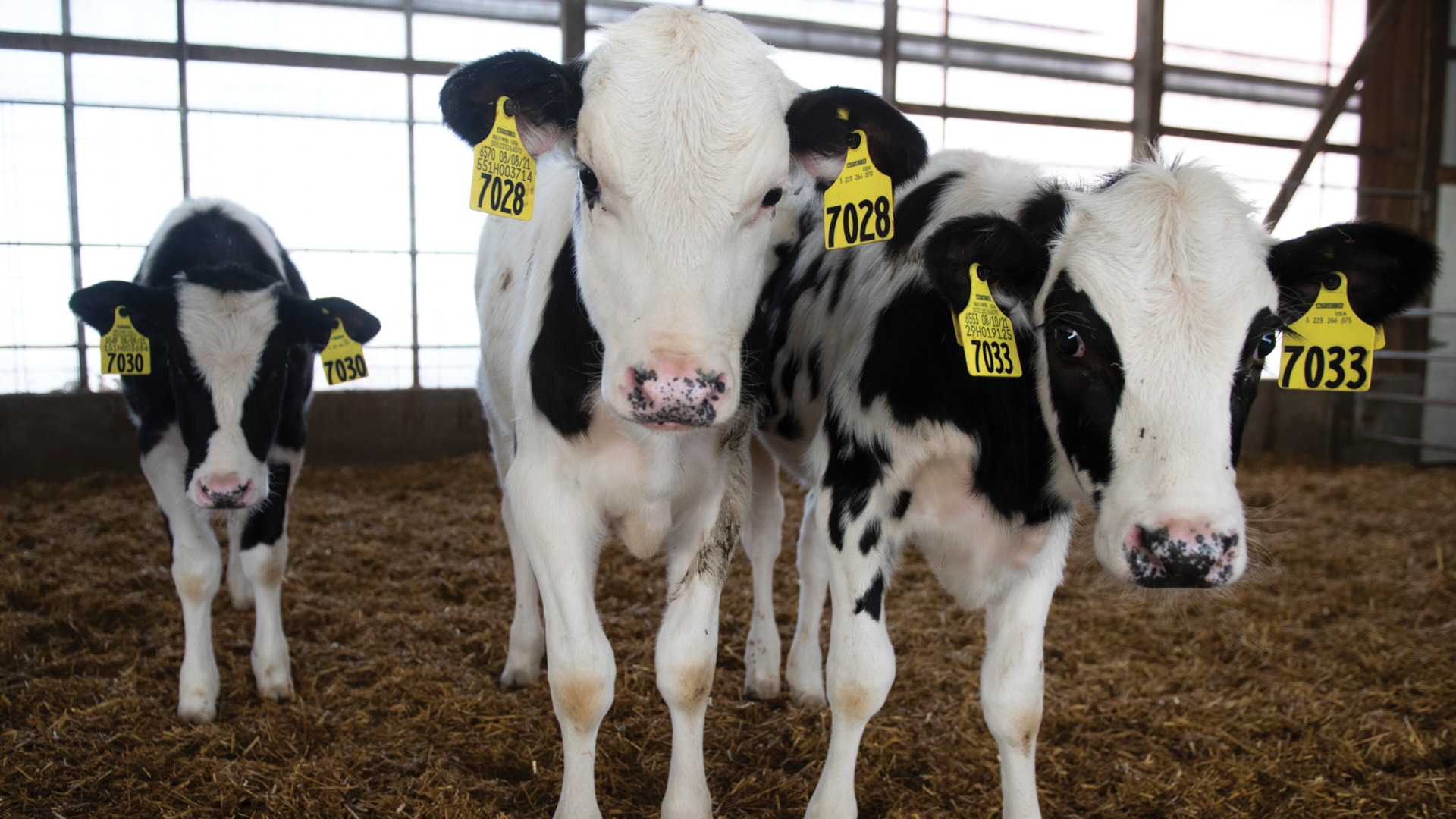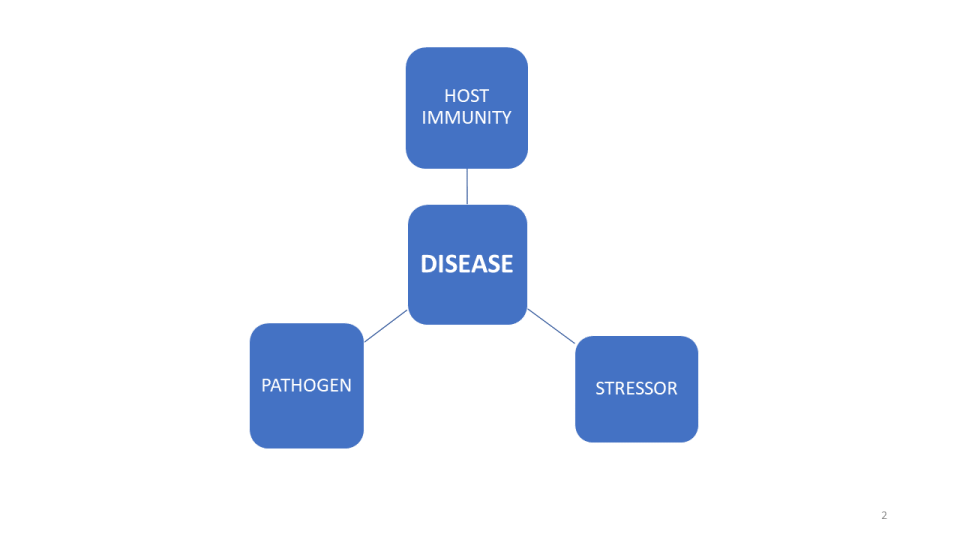Assessing the risks and financial impact of calfhood respiratory disease
By Dr. John Champagne
In pre-weaned dairy calves, diarrhea and calfhood pneumonia account for the bulk of health challenges, and respiratory disease accounts for almost half of deaths in post-weaned calves. Identifying and managing risk factors can help prevent calfhood pneumonia.
Physiologically speaking, calves are susceptible to respiratory challenges leading to increased risk of respiratory infection and the development of lung lesions. Calves maintain a high oxygen demand, but their lung capacity has marginal room for compromise to meet those demands, particularly as they grow. That’s why it’s important to be aware of the risks associated with calfhood pneumonia.

Understanding the disease triangle below can help formulate prevention strategies to reduce respiratory disease. The disease triangle and the “balance” between each of the three components and their contribution to disease provides the framework for respiratory disease prevention. Recognize that this “balance” is not static and is always a moving target.

Maternity management
The maternity/calving area is a good place to start when considering respiratory disease risk.
- Facility type: Animal stocking needs, bedding and environment control
- Labor: Availability and expertise of employees
- Sanitation: Effective and timely “best practices”
- Calving (dystocia): Differentiation from normal calving process and skills to properly manage each scenario
- Navel dipping: Timely and effective application
- Calf removal: When, how, and where calves get moved to
- Neonatal holding area: Same considerations as maternity/calving area, including management, identification, colostrum identification, naval dipping, etc.
Colostrum management
The importance of colostrum and its relationship to disease resistance in calves is critical.
- Availability: Is there enough to meet current and projected needs or are supplements and replacers needed?
- Quantity: Are calves receiving the correct amounts?
- Quality: Must assess levels of antibodies and consider bacterial enumeration
- Timeliness: Time period from collection to feeding
- Monitoring: Strategic colostrum program assessments and observations
Calf housing
The risks associated with calf housing overlap with maternity management in many ways.
- Facility type: Dictates level of management required to optimize raising a healthy calf, each type of housing has advantages and disadvantages when it comes to disease risk
- Sanitation: Managing pathogen exposures during the time periods of greatest risk in a calf’s life
- Ventilation: Air exchange capacity as levels of fine particulates and noxious gasses become elevated and how this varies based on geography and facility design
- Environmental temperature control: Can have wide variability and temperature extremes depending upon geography and season
- Bedding management: Can have an effect or be affected by all of the above bulleted points
Immunocompetence and immunization
With respiratory disease incidences of 20% to 30% in calf populations, there is clear need for vaccines to reduce respiratory disease and the corresponding negative effects of the disease.
- Age: Affects capacity of calf’s early immune function
- Pathogen: Viruses and bacteria and the levels of exposure to them
- Vaccination: Vaccine’s ability to stimulate an effective immune response, the duration of immunity for that response, and the route of administration
- Colostrum inhibition: Vaccines containing viruses and bacteria commonly associated with respiratory disease in young calves can have reduced effectiveness in the face of maternal antibodies (IFOMA) from colostrum. Different routes of vaccine administration, like intranasal vaccines, allow effective respiratory immunization in the young calf.
- Concurrent health event: What other health issues affect the calf and its ability to either resist or resolve a respiratory infection?
Financial risks and impact
The expenses associated with respiratory disease can be variable with both direct and indirect costs. For example:
Direct costs
- Treatment costs, including drugs relevant to treatment protocol in place
- Labor variable, depending upon facility size and scale
- Mortality (death) has a large negative impact
Indirect costs
- Negative effects on growth
- Reproductive efficiency (age to first calving)
- Potential loss of milk production in the first lactation
By reducing calf pneumonia, more animals reach their relevant production cycle goals, be it their first lactation for a dairy replacement or as a finished feedlot animal. Regardless of these goals, reduction of respiratory disease facilitates better animal and human welfare, increases animal agriculture sustainability, and has a positive fiscal effect.
Calf respiratory disease remains a relevant disease event in calf populations. Risk management of the important areas for disease reduction and prevention remain critical to the success of dairy operations.
Find more content for your dairy operation.
About the author

Dr. John Champagne, DV.M., M.P.V.M.
Dairy Technical Services,
Merck Animal Health
